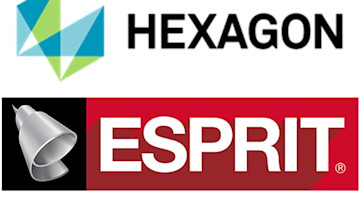There are approximately 140,208 firms in the manufacturing sector in the United States. According to 2016 U.S. Census Bureau data, the latest year for which the data is available, 97 percent are small businesses with fewer than 500 employees; 73 percent have fewer than 20 employees. That is a remarkable statistic and testifies to the strength of family businesses in our industry. In this article, we will highlight some of the most notable strengths of family businesses as well as some of the challenges that family businesses can face, which are often different from those of non-family businesses.
THE STRENGTHS OF FAMILY
Many family businesses start with an innovative founder who leads the company through some of its most challenging growth years. The entrepreneurial drive and personal commitment of the founder and other family members is a huge asset and provides resilience in the face of business challenges. Family members share the drive to make the business successful, and sacrifices are made not just for the business, but for the family, a powerful motivator. The number of successful family businesses in the manufacturing technology ecosystem clearly support the success of this model.
Another great strength of family businesses is thinking strategically long term. This contrasts sharply with publicly owned companies that consistently think short term, pressured by returns to stockholders, other investors, and boards. Privately owned, larger companies fall somewhere in the middle depending on leadership.
There is a much greater level of trust and commitment in family businesses than in other business structures. This implicit trust and commitment go a long way toward both open and frequent communication about business needs and opportunities as well as job security and overall productivity. Turnover tends to be extremely low among family members who are also more likely to be in executive and management positions. Given how much productivity is lost at a company due to turnover, learning curves, and the need for training, this productivity adds to the company’s bottom line.
Lastly, there is a much greater level and frequency of communication in family-owned businesses. “We can make decisions pretty quickly — in minutes instead of weeks at times,” said Tim Hales, vice president of Hales Machine Tool, a family-owned CNC machine tool distributor headquartered in Plymouth, Minn. “That being said, we also keep business and family issues separate. We don’t discuss work at family holidays, and we don’t discuss holidays at work.”
Hales Machine Tool was founded in 1983 by Tim’s father, Chuck Hales, and Tim’s brother, Dan, who serves as president. Tim joined in 1984. Dan, Tim, and their brother Randy bought out their father and now own and manage the company. They currently employ about 25 sales, service, and support personnel, including six members of the Hales family and extended family. Today, they specialize in multi-axis machining centers, swiss lathes, and grinding machines.
UNIQUE CHALLENGES
One cannot overstate the unique strengths of family business. However, there are also unique challenges family businesses share because of the nature of their business structure.
While the Hales family has managed to avoid it, one of the biggest potential challenges in family businesses is a more informal structure, which can translate into a lack of formal, written policies and process documentation around operation of the business. This can include business planning, training documents, marketing plans, job descriptions, and succession plans. The overall greater level of trust and communication among employees may offset this to some extent, but depending on circumstances, written documents and policies are important to ensure there is consistency and transparency in the business.
A second challenge can be pressure to hire family members, which is only a problem if they do not possess the requisite skills and experience for their job responsibilities. Related to this, it is important to communicate that there are advancement opportunities for all employees and that these opportunities are only based on merit and skills.
Family businesses tend to be more conservative about leverage than other companies, and many businesses are biased against borrowing because it can dilute the family’s equity stake in the company. This is understandable and perhaps strategic, but in a time of new and disruptive business models and capital-intensive R&D, it may result in slower entry into new markets.
SUCCESSION PLANNING
SCORE, a partner of the U.S. Small Business Administration, reports that only 30 percent of family-owned businesses (not specifically in manufacturing) survive from the first to the second generation, and only 12 percent from the second to the third generation. While these statistics may be slightly different in manufacturing, this data indicates that family businesses do face challenges in developing and motivating the next generation of family leaders to continue to operate the business.
Transition from one generation to the next is often one of the least planned-for events within family businesses. Many do not have family business planning and governance frameworks in place to deal with succession issues, which can lead to uncertainty, conflicts, and divisions when the issue comes up in the business lifecycle.
It is important to put family members into leadership roles as early as possible and involve them in the management of operations and financial issues so they can be ready for their future responsibilities.
“We have spent considerable time and resources getting our company succession plan in place. It was a big step for us, but we knew it was something that needed to be done. It’s formal, written, and legal,” said Hales. “We also have developed a comprehensive set of written policies and handbooks over the years. The biggest challenge is keeping them up-to-date as things change and policies evolve.”
In summary, the family business model works well in manufacturing, but it can present challenges, which executives should keep in mind as the business evolves.





